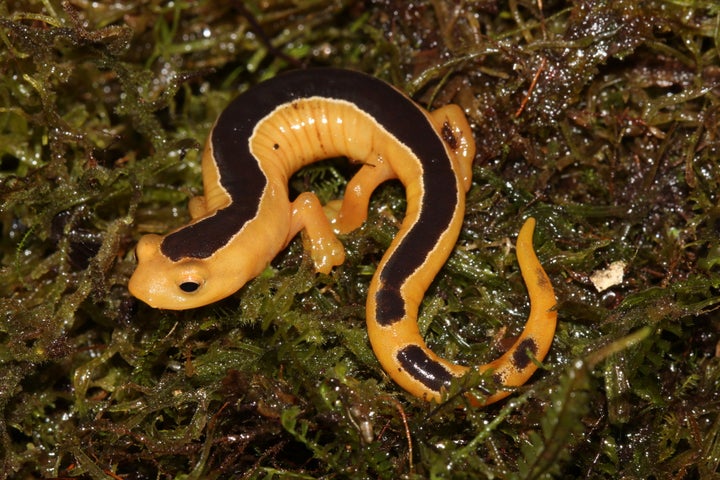WASHINGTON — A species of salamander that had been feared extinct has been rediscovered in the Cuchumatanes mountains of Guatemala, the Texas-based Global Wildlife Conservation announced Monday.
The Jackson’s climbing salamander, also called the “golden wonder” for its vibrant yellow color, had last been sighted in 1975, when two Americans discovered the species in the Guatemalan jungle. A guard at the Finca San Isidro Amphibian Reserve, in northwestern Guatemala, spotted a juvenile Jackson’s climbing salamander earlier this month during a routine patrol. It is just the third individual ever reported seen, according to GWC.
The group, which launched a global quest earlier this year to track down long-lost species, described the rediscovery as exciting and unexpected.
“I love this story because it conveys how protecting habitat gives species a fighting chance to survive on this planet,” Don Church, GWC’s president and director of conservation, said in a statement. “This rediscovery can only be a good omen for the future of the Search for Lost Species campaign. It’s a sign that if we get out there and work at it, many of these species can be found and saved.”
A photo of the four-legged, yellow-and-black amphibian was sent to Carlos Vasquez, curator of herpetology at Universidad de San Carlos in Guatemala, who has spent more than 3,000 hours searching for the species since 2005. Vasquez confirmed that it was a Jackson’s climbing salamander, the conservation group said.
“We had started to fear that the species was gone, and now it’s like it has come back from extinction,” Vasquez said in a statement accompanying Monday’s announcement. “It’s a beautiful story, and marks a promised future for the conservation of this special region.”

The larger project, called “The Search for Lost Species,” is described as the “largest-ever global quest to find and protect” animals and plants missing for decades. GWC’s list of 25 flagship species — none of which have been officially declared extinct — comes from a larger list of 1,200 species considered “lost” in more than 160 countries. The group compiled the list with the help of experts at the International Union for Conservation of Nature and has begun launching expeditions in an effort to track down species.
Priority species include the Wondiwoi tree kangaroo, last spotted in 1928 in Indonesia; the pink-headed duck, missing since 1949; and the bullneck seahorse, a species native to Australia never before seen in the wild.
In an interview in April, Church told HuffPost that even if species aren’t found, the campaign offers “a message of hope and opportunity” on the importance of protecting hotspots of biodiversity.
“It’s about raising the profile both of the species that we’re looking for but more so the places where they occur,” he said.
But as Monday’s announcement made clear, there’s plenty of reason to be excited about the global quest.

